Have you ever wondered what is vegetable tanned leather and why it has become so popular? Vegetable tanned leather stands out from other types of leather for its eco-friendly production process and impressive durability. Unlike conventional leather, it’s crafted using natural, plant-based materials, making it a more sustainable choice. The result? A high-quality material with a rich, earthy charm that’s perfect for those who value both style and sustainability.
Understanding what is vegetable tanned leather allows you to appreciate its beauty and craftsmanship truly. This traditional tanning method has a deep-rooted history and produces leather that’s not only durable but also soft and biodegradable. One of its standout features is how it ages gracefully over time, developing a unique patina that adds character. If you’re intrigued by the idea of sustainable leather, dive in to discover more about vegetable tanning and why it’s such a classic choice.
What is Veg Tan Leather
Vegetable tanned leather, also known as veg tan leather, uses natural earthy tannins from plants to process animal hides. This traditional and antique method of plant-based tanning avoids the use of chemicals, making this whole process eco-friendly. The result of the tanning process is beautifully crafted high-quality veg tan leather, which has a unique rich, and earthy aroma to it. Over time, the veg tan leather develops a unique patina, which contributes more details to the leather.
Knowing what is vegetable tanned leather helps make sustainable choices when buying leather products. As the veg tan leather is thicker than chrome-tanned leather, it is ideal for leather items like belts, leather wallets, leather bags and different types of leather jackets. The natural aging process of veg tan leather helps in enhancing its appeal, offering a timeless look. By choosing vegetable leather, you make an eco-friendly choice that help the environment.
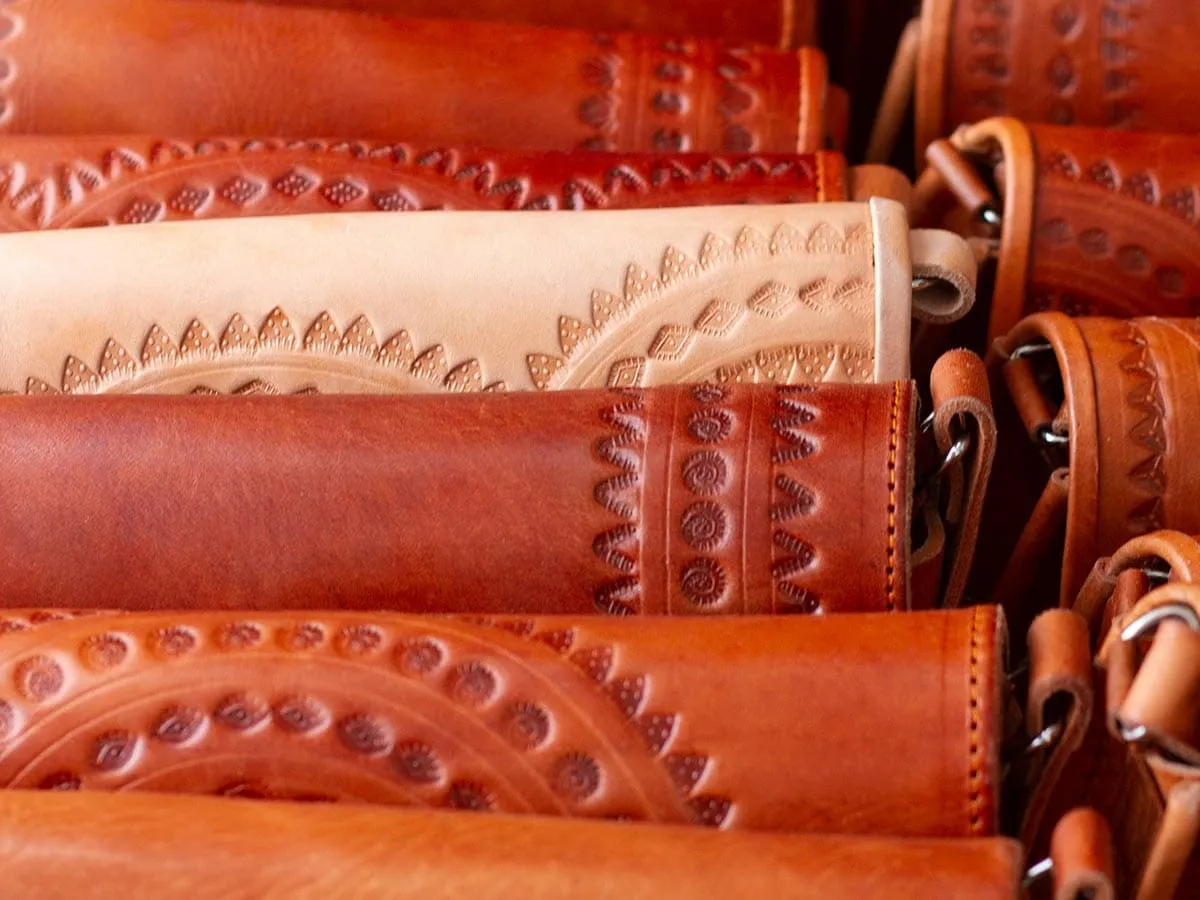
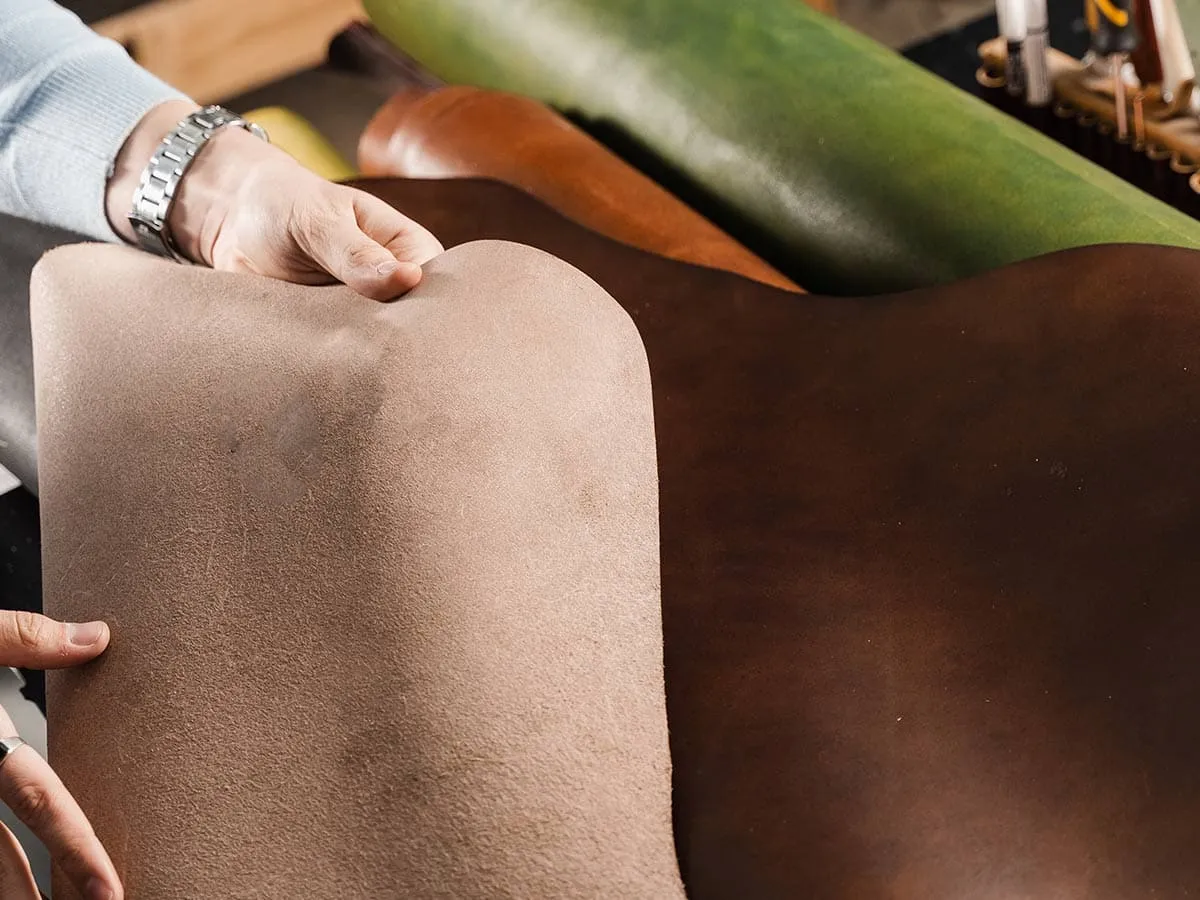
Vegetable Tanning: Features
To know more about what is vegetable tanned leather, let’s now highlight its main features. Vegetable leather is loved for its unique charm and practical benefits, making it a favorite for many. One of its standout features is how it develops a rich, beautiful patina as it ages. Over time, this natural process gives each piece of leather a one-of-a-kind look, almost like it’s telling the story of its journey.
Another big plus is how eco-friendly it is. The vegetable tanning process uses natural tannins from plants, like tree bark, instead of relying on harsh chemicals. This not only reduces its environmental impact but also makes the leather biodegradable. On top of that, vegetable leather is incredibly durable and strong. It’s thicker and sturdier than chrome-tanned leather, which makes it perfect for creating long-lasting items like belts, leather wallets, leather bags and different types of leather jackets.
What’s more, it has a distinct, earthy smell that sets it apart from other types of leather like bonded leather and faux leather. That said, it’s worth noting that vegetable tanned leather is more sensitive to water and can darken when exposed.
History of Vegetable Tanning
That’s all on what is vegetable tanned leather, let’s now understand the history behind tanning leather. Vegetable tanning is an ancient and important craft that has been practiced for thousands of years. Early civilizations like the Egyptians and Mesopotamians found ways to preserve animal hides using natural tannins. They extracted these tannins from plants, especially from the bark of Acacia trees. People used these natural materials to process animal hides and turn them into strong, long-lasting leather. This method not only made the hides durable but also protected them from rotting. Over time, vegetable tanning became a vital skill for making leather items, which were used for clothing, tools, and storage.
As time progressed, the art of vegetable tanning spread across different cultures. The Greeks and Romans refined these techniques, employing tannins from various plant sources to produce leather for clothing, footwear, and armor. During the Middle Ages, the Arabs further enhanced the process, leading to the creation of highly prized leathers such as Morocco and cordovan.
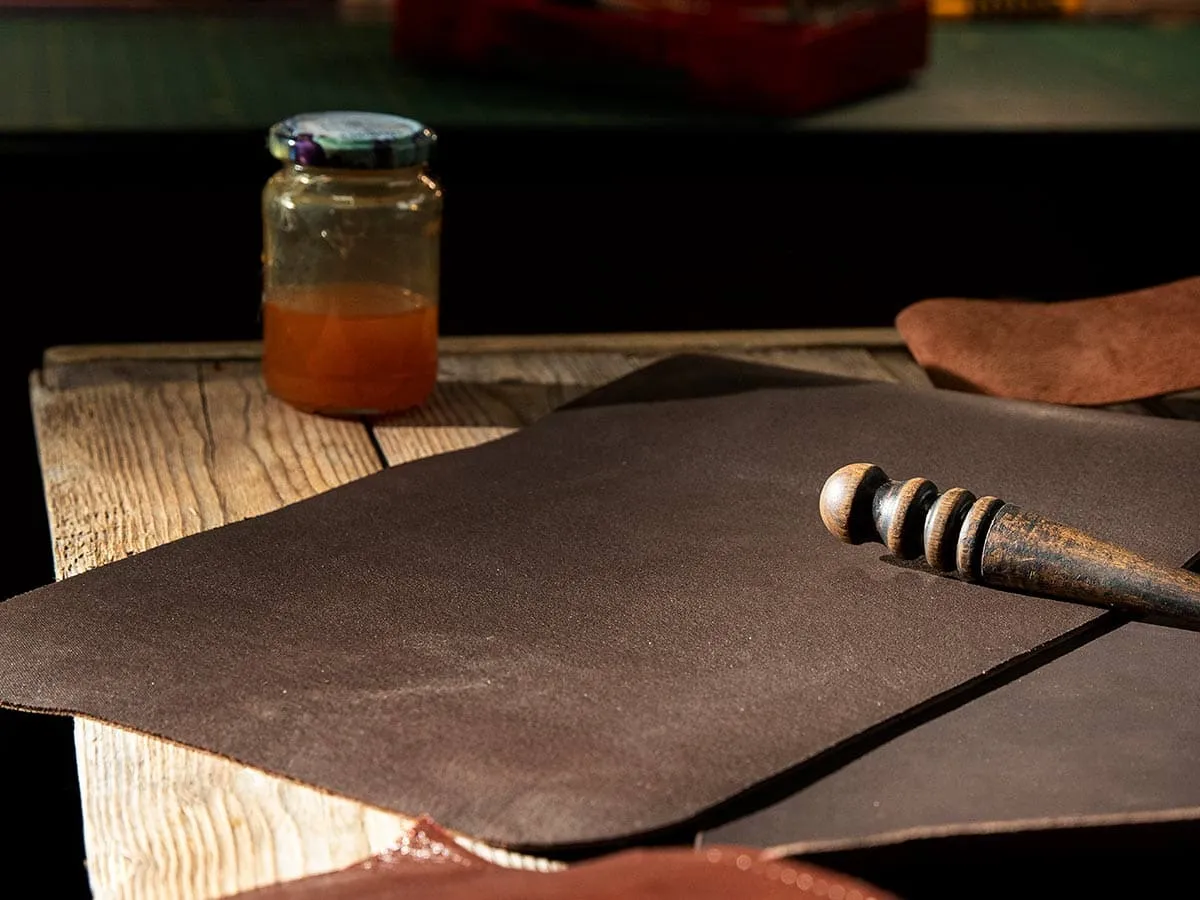
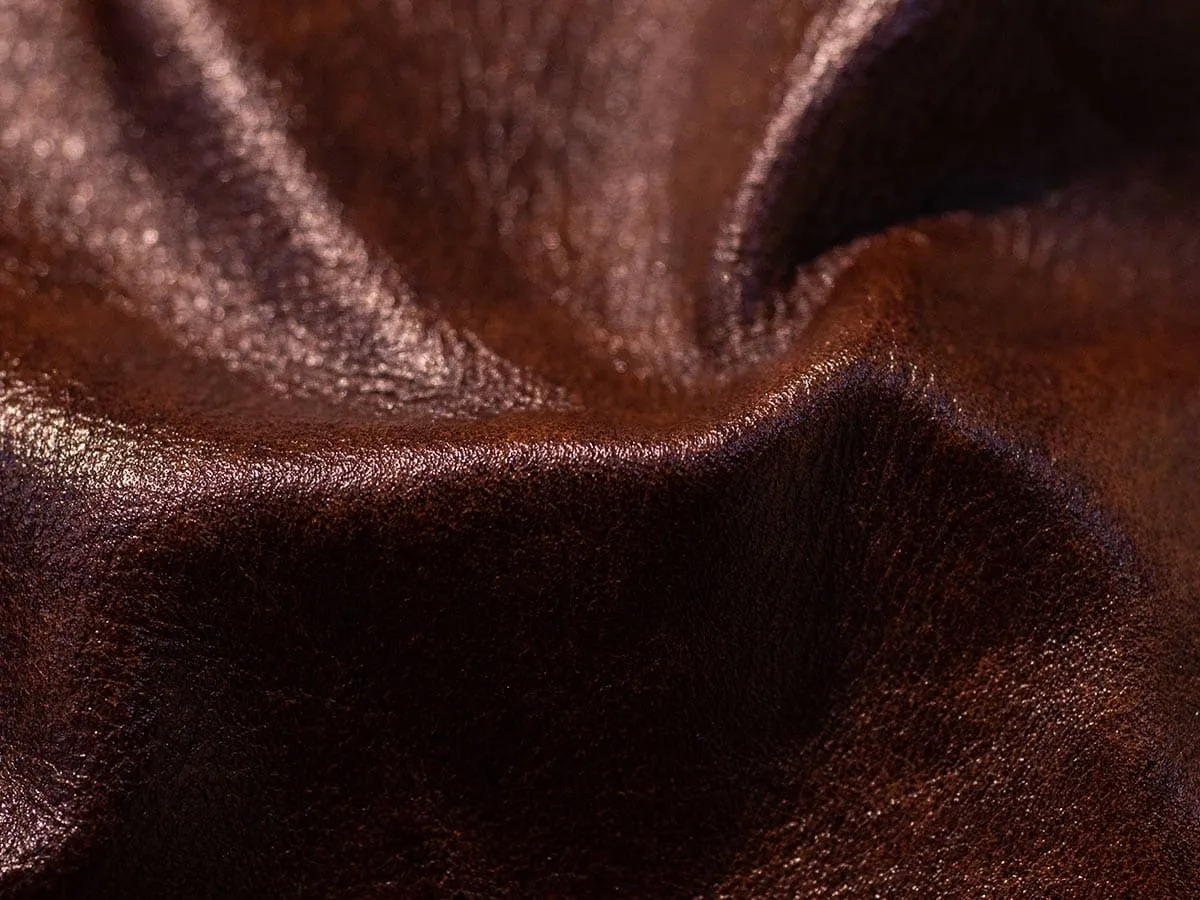
Is Vegetable Tanned Leather Real Leather?
The question that is frequently asked by many is ‘what is vegetable tanned leather and is it really real leather?’. Yes! vegetable-tanned leather is indeed real leather because it is made from animal hides, just like other real leathers. The word “vegetable” refers to the tanning process, not the material of the leather itself. This process uses natural tannins found in plants like tree bark, leaves, and fruits. These tannins help preserve the hide and turn it into strong, long-lasting leather. Unlike other methods, vegetable tanning avoids synthetic chemicals, making it an eco-friendly option. Vegetable tanned leather is also known for its rich texture and ability to develop a beautiful patina over time.
It’s important to distinguish vegetable leather from vegan leather. While their names might sound similar, they are fundamentally different. Vegetable-tanned leather is derived from animal hides, whereas vegan leather is made from synthetic materials designed to mimic the look and feel of real leather. Therefore, vegetable-tanned leather offers the authenticity and durability of traditional leather, enhanced by a natural tanning process.
Vegetable Tanning Process
The process of tanning leather is an integral part of learning on ‘what is vegetable tanned leather’. The vegetable tanning process is a traditional method that transforms raw animal hides into durable leather and is what makes it different from other types of leather like bonded leather and faux leather.
1. Preparation of Hides (Beamhouse Phase)
The process begins with the preparation of hides, known as the beamhouse phase. In this stage, hides undergo several treatments to remove any impurities and prepare them for tanning. The specific steps can vary depending on the desired characteristics of the final leather product.
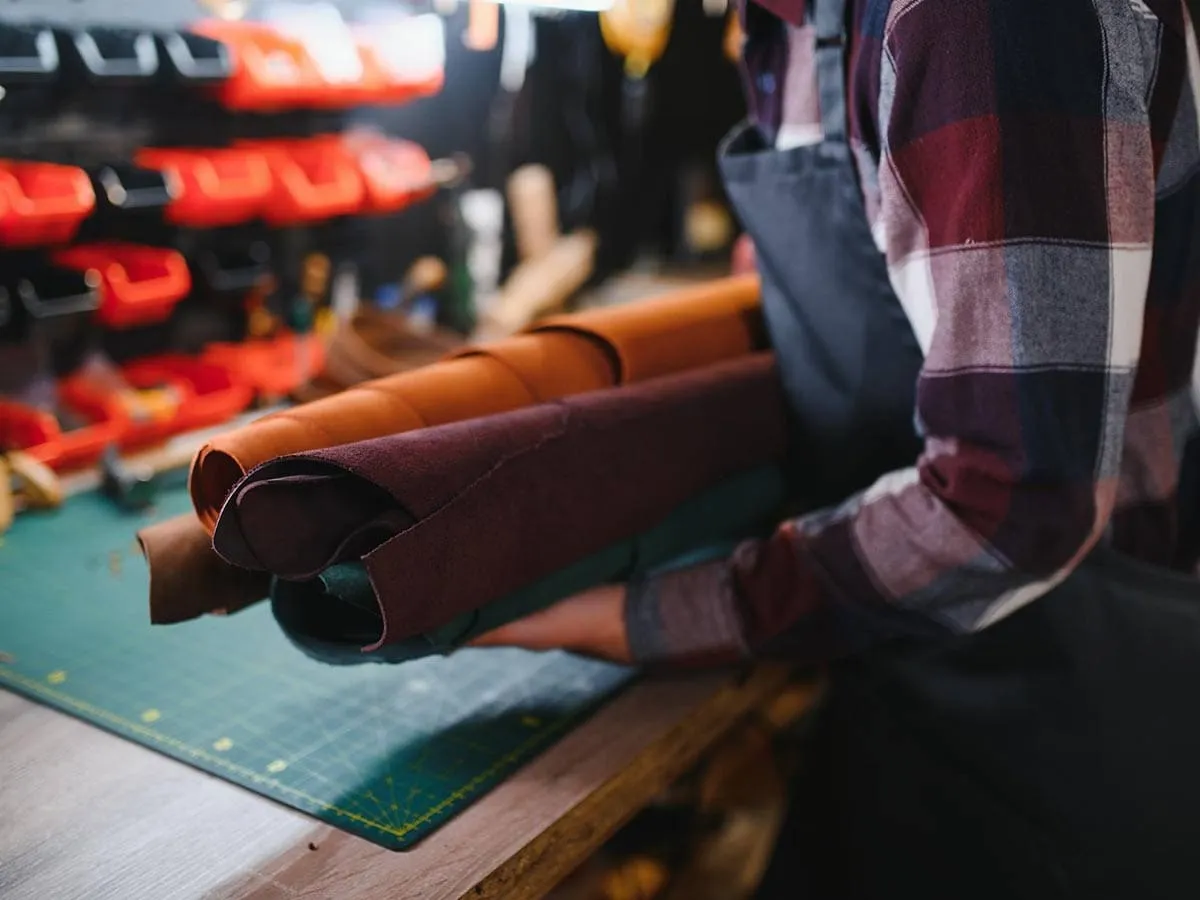

2. Tanning
During the tanning phase, hides are immersed in vats containing tannin-rich solutions derived from plant sources such as oak bark, chestnut, or hemlock. This immersion allows the tannins to penetrate the hides, binding with collagen fibers and making the leather more durable and resistant to decay. The tanning process typically spans over several weeks, with hides gradually moving through vats of increasing tannin concentration.
3. Re-tanning
After the initial tanning, hides may undergo re-tanning to achieve specific qualities. This step involves additional treatments to enhance the leather’s softness, color, and overall appearance. Re-tanning can include the use of different tannin types or other natural substances to achieve the desired characteristics.
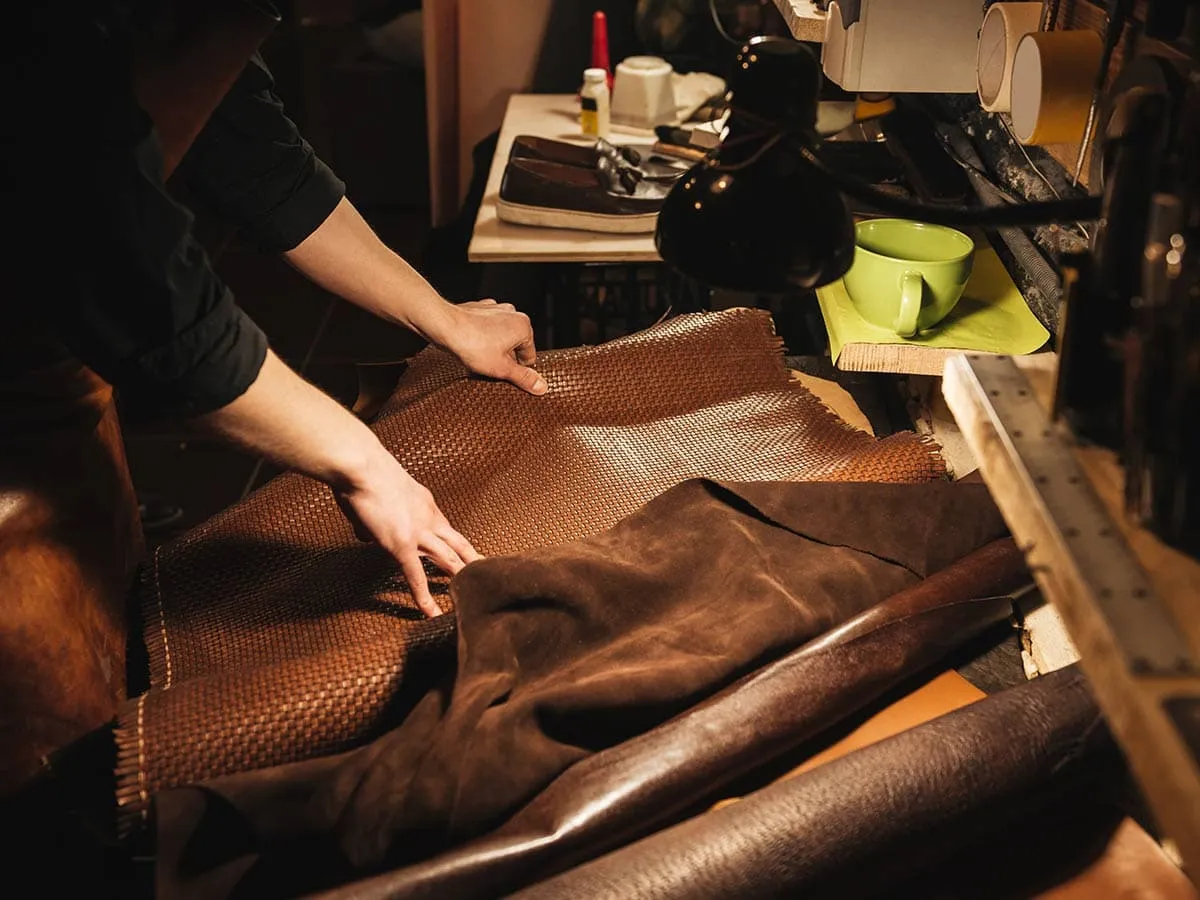
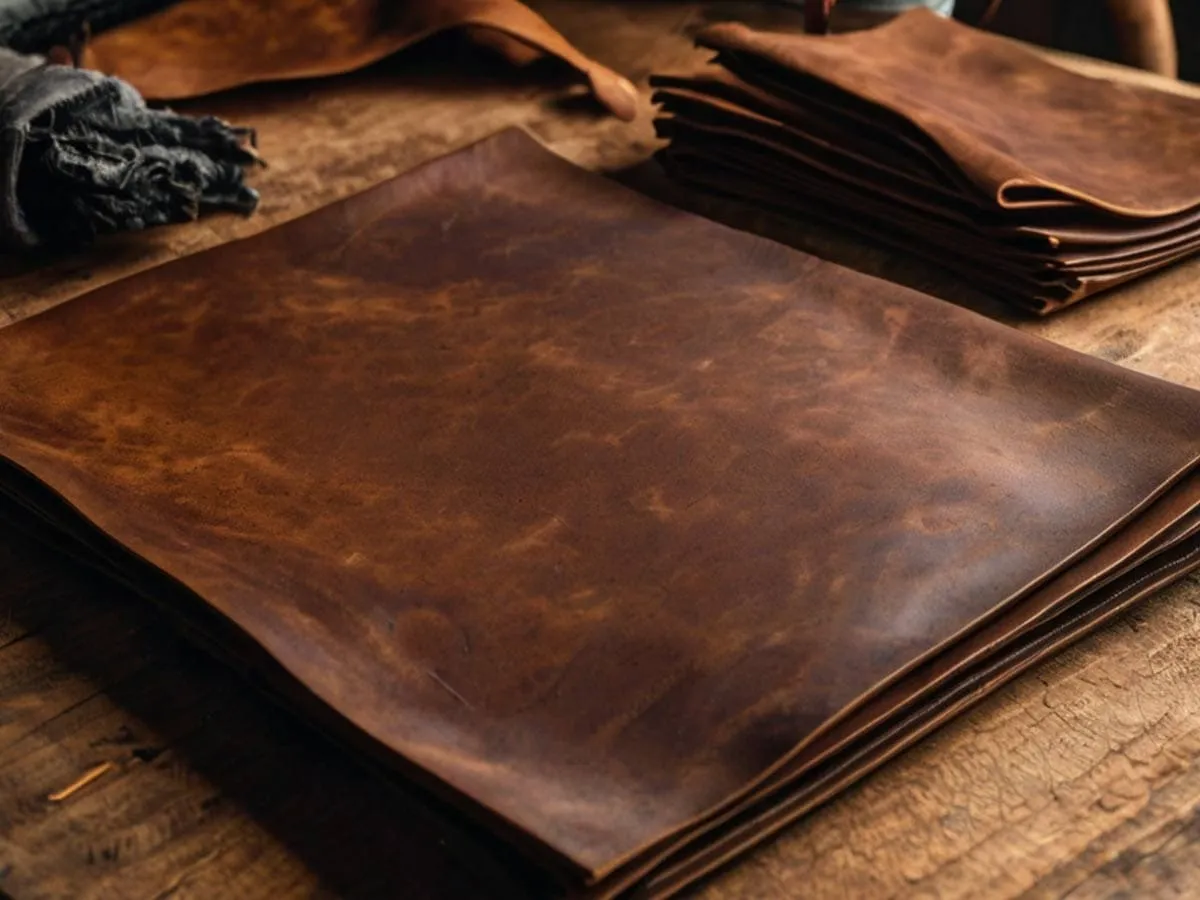
4. Drying
Once tanning is complete, the leather is carefully dried. This process is crucial to prevent the leather from becoming too stiff or brittle. Proper drying makes sure that the leather maintains its flexibility and strength.
5. Finishing
The final stage involves finishing treatments that may include dyeing, conditioning, and polishing. These steps enhance the leather’s aesthetic appeal and prepare it for various applications, such as crafting belts, leather wallets, leather jackets and other accessories. To know more about leather finishes, read: Types of leather finishes.
Throughout the vegetable tanning process, artisans monitor each stage to make sure the leather develops the desired qualities.
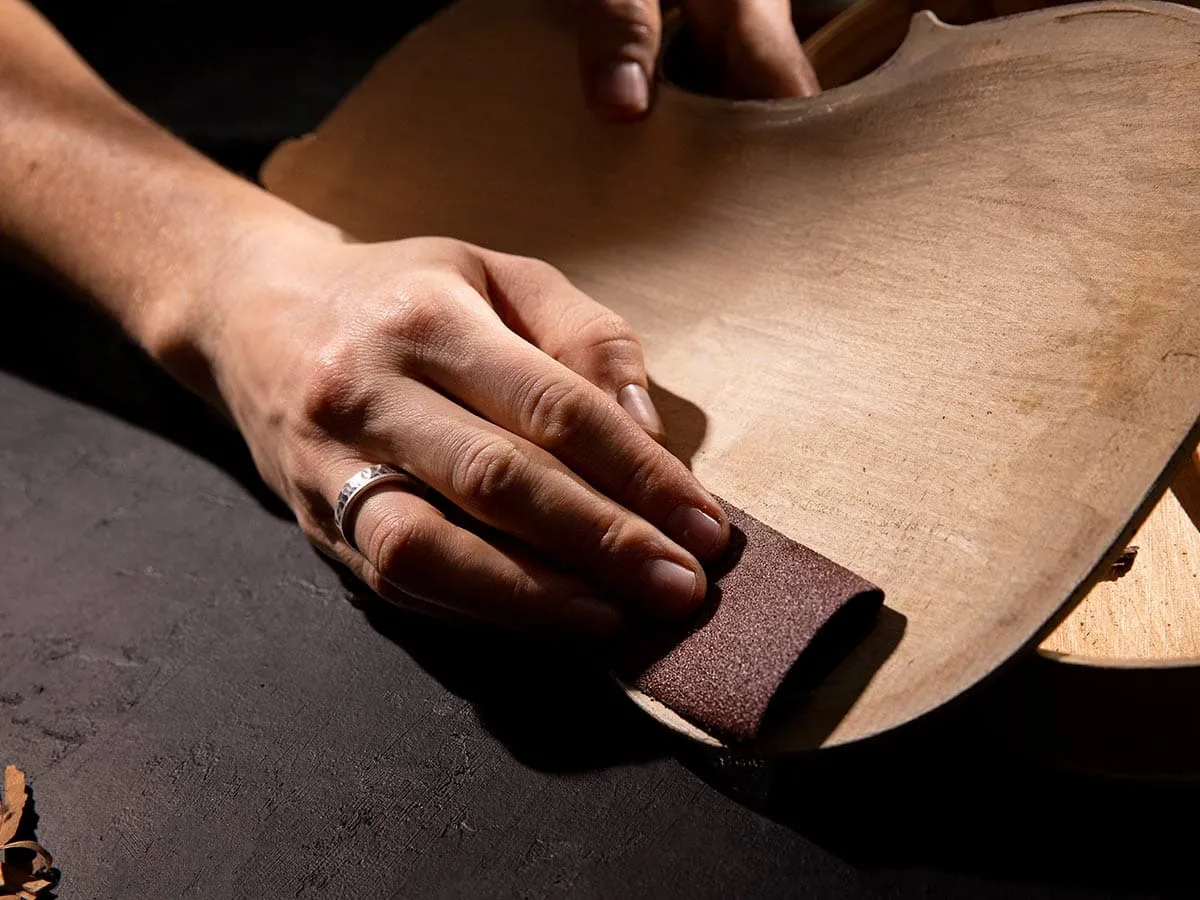
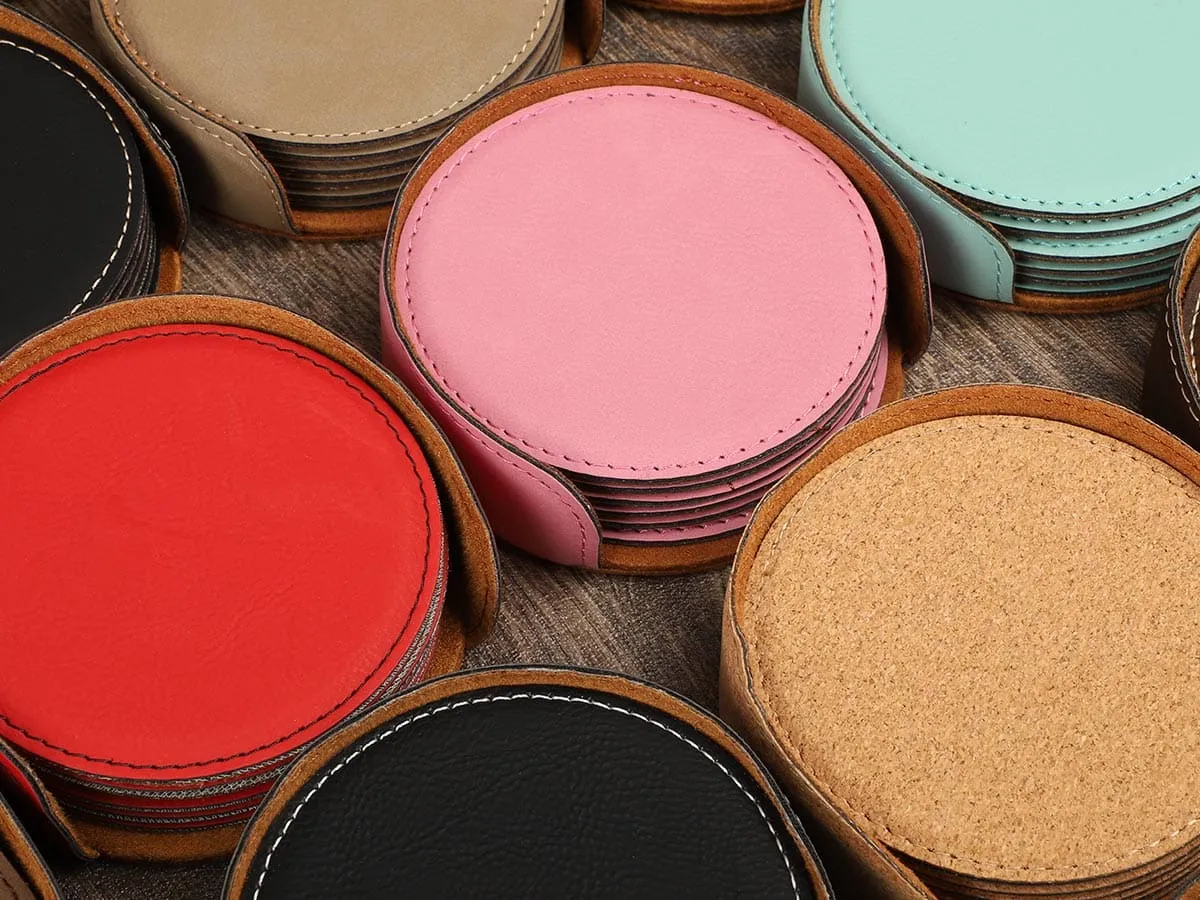
Benefits of Vegetable Tanned Leather
Now that you have learned all about what is vegetable tanned leather and the tanning process, let’s explore some reasons why vegetable leather can be a great choice for you to consider. Vegetable-tanned leather offers several advantages that make it a preferred choice for many artisans and consumers.
1. Environmental Friendliness
The vegetable tanning process uses natural tannins from plant sources like tree bark, leaves, and fruits. This method avoids the use of harmful chemicals, making it more eco-friendly compared to synthetic and chrome-tanned leathers.
2. Durability and Longevity
Leather produced through vegetable tanning is known for its strength and durability. It develops a unique patina over time, enhancing its appearance and character. This aging process contributes to the leather’s longevity, allowing it to last for generations with proper care.
3. Health and Safety
Unlike chrome-tanned leather, which can contain toxic chemicals, vegetable-tanned leather is safer for both the artisans who work with it and the consumers who use it. The natural tanning agents reduce the risk of skin irritation and other health issues associated with synthetic materials.
4. Unique Aesthetic Appeal
Vegetable-tanned leather has a distinctive, sweet, and woody aroma. Its natural colors and textures develop over time, resulting in a rich, deep character that is unique to each piece. This aesthetic quality makes it highly valued in high-end, handmade leather items.
5. Biodegradability
At the end of its life cycle, vegetable-tanned leather is biodegradable. This characteristic makes sure that it does not contribute to long-term environmental pollution, unlike synthetic leathers that can persist in landfills for years.
These qualities make it a sustainable and attractive option for consumers seeking high-quality, eco-friendly leather items.